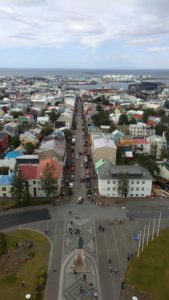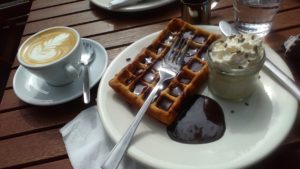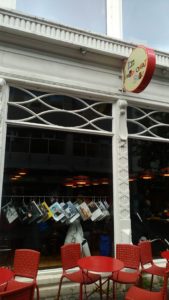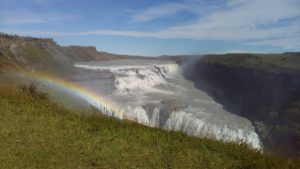As my time in Iceland is coming to a close, I am both reluctant to leave and ready for my time of living out of a suitcase to be over. I have really grown comfortable in Reykjavík over the past several weeks, and my Icelandic has definitely improved greatly. I only with I had more time here!

My favorite assignment for the Icelandic course was the “Interview with an Icelander” assignment, in which we had to ask an Icelander questions (in Icelandic), record the answers, and present our findings to the class (in Icelandic). I had been dreading this assignment the entire course because I am not the sort of person who feels comfortable accosting strangers in any tongue, let alone one in which I am only beginning to attain a tenuous competence. After completing the assignment, I was completely stunned to discover that this was my favorite part of my entire stay. I had to get over my fears of speaking to random strangers and manage to small talk with them for an extended period of time (again, something I hate doing in English anyway). They understood my Icelandic and clearly enjoyed talking with me (and correcting me, ha).

In fact, my friend and I interviewed a total of five Icelanders for the assignment: three who the traditional wool sweaters, one who owns a bookshop, and one who works at Iceland’s Blue Lagoon skin product line. Three of these people worked at Kolaportið (the downtown flea market), four were born and raised in Reykjavík, and 5/5 say they like tourists (well, at least tourists bring in a lot of business). They all find Reykjavík expensive (this is definitely true). One dreams of moving to Italy where summers actually get really warm (she jokes that her ideal weather is 40 degree centigrade). Another has sung in a church choir ever since she was a little girl. The bookshop owner houses his bookshop in the same space where his grandfather had owned a printing press, and they want to open a museum about the history of book publishing in Reykjavík someday. Most of these Icelanders do not eat traditional Icelandic food very often (this includes delicacies like fermented shark and sheep’s head), except maybe skyr (which is kind of like Greek yogurt, and totally delicious) and pastries [rúgbruað (a sweet ryebread) and kleina (like a dough nut)]. I gained great insight into the great variety of interests and priorities of Icelanders in these conversations.

While Reykjavík is quite a small city (about 220,000 in its greater metropolitan area), it didn’t feel like a small city to me. As I was busy in class for hours five days a week AND going on field trips during the weekends, I felt like I never ran out of anything to do. There are still many things in Reykjavík I have not done, but I really hope to come back in the future to continue my exploration of Iceland and its fascinating (and difficult) language!
Bless Bless! (Bye bye!)
